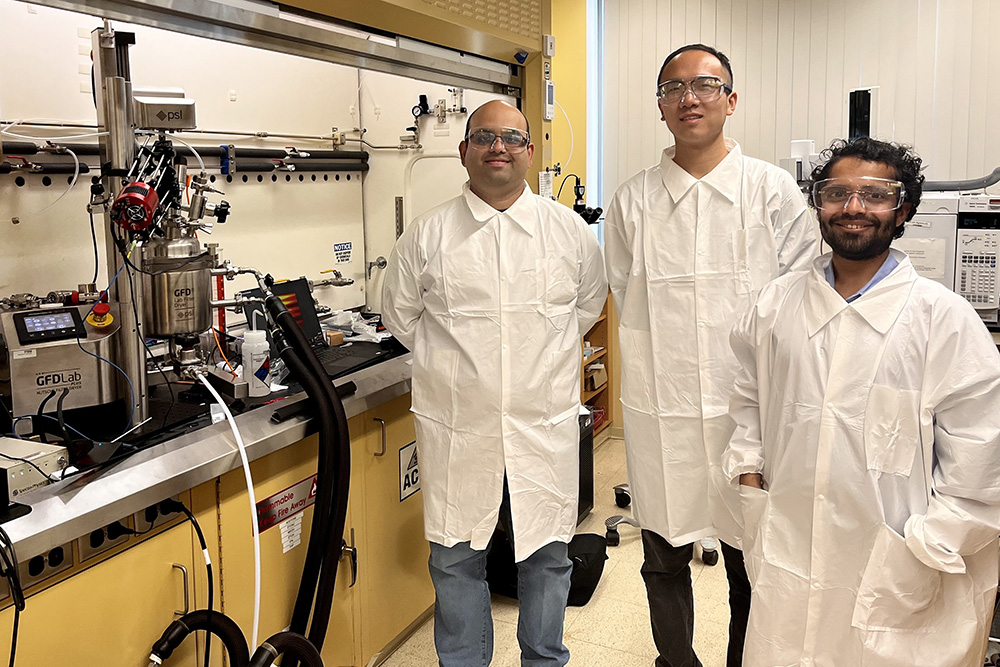In Short:
MIT researchers have developed a new, faster method to monitor particle sizes in pharmaceutical manufacturing using scattered light. Their technique can analyze a single image in just 0.25 seconds, significantly improving efficiency. This low-cost, noninvasive approach helps enhance production quality and enables better monitoring of processes like drying and mixing, marking a major advancement for the industry.
The pharmaceutical manufacturing industry continues to face challenges in monitoring the characteristics of drying mixtures, a critical phase in the production of medications and chemical compounds. Currently, two noninvasive approaches are widely employed: one entails imaging samples and counting individual particles, while the other utilizes scattered light to estimate particle size distribution (PSD). Although the imaging method is effective, it is time-consuming and generates considerable waste, making the scattered light approach more favorable.
Advancements by MIT Engineers
Recently, engineers and researchers from MIT have developed a physics and machine learning-based scattered light technique that enhances pharmaceutical manufacturing processes for pills and powders. This method has been shown to improve efficiency and accuracy, thereby reducing the incidence of failed product batches. A newly published open-access paper titled “Non-invasive estimation of the powder size distribution from a single speckle image” in the journal Light: Science & Applications builds upon this research, proposing an even faster method.
New Methodology Introduced
“Understanding the behavior of scattered light is one of the most significant challenges in optics,” comments Qihang Zhang, PhD ’23, an associate researcher at Tsinghua University. “Advancements in analyzing scattered light have led us to create a valuable tool for the pharmaceutical industry. Identifying and addressing the core issues through fundamental investigations is particularly rewarding for our research team.”
The paper introduces a novel PSD estimation technique that leverages pupil engineering, significantly reducing the number of frames required for analysis. “Our learning-based model can now estimate the powder size distribution from a single snapshot speckle image, decreasing the reconstruction time from 15 seconds to just 0.25 seconds,” the researchers report.
Significant Improvements in Detection
“Our key achievement in this research accelerates the particle size detection method by a factor of 60, achieved through optimized algorithms and hardware,” Zhang states. “This high-speed probe is adept at monitoring size evolution in fast dynamical systems, thus establishing a platform for studying various processes in the pharmaceutical sector, including drying, mixing, and blending.”
Implications for Pharmaceutical Manufacturing
This technique provides a low-cost, noninvasive particle size detection solution by collecting back-scattered light from powder surfaces. The compact and portable prototype is designed to be compatible with most drying systems available in the market, provided there is an observation window. This online measurement method may significantly enhance process control in manufacturing, thereby improving both efficiency and product quality. Importantly, previous limitations in online monitoring hindered systematic studies of dynamic models in manufacturing processes. This innovative probe could pave the way for extensive research and modeling concerning particle size evolution.
Collaboration Across Disciplines
The research reflects a successful collaboration among physicists and engineers, originating from the MIT-Takeda program. Collaborators hail from three MIT departments: Mechanical Engineering, Chemical Engineering, and Electrical Engineering and Computer Science. George Barbastathis, a professor of mechanical engineering at MIT, serves as the senior author of the article.





